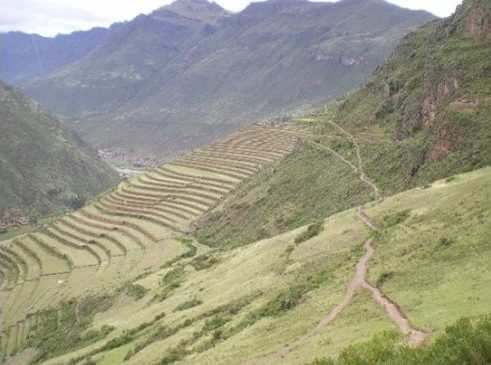A Tale of Two Summits
Facilitators:
Bahá'í International Community; Coalition of the UN We Need; and Stimson Center
Wednesday July 26, 2023
Hybrid event: In person; Virtual via Zoom
Two global summits will be held on sustainable development over the course of the next fourteen months. Both summits will prioritize strengthening the Sustainable Development Goals (SDGs). The first summit, “SDG Summit”, takes place on September 21, 2023. It marks the midway point to the deadline set for reaching the mission of Agenda 2030 and its 17 SDGs.


Speakers at today’s discussion distinguish the two summits. The first summit focuses on identifying WHAT has been achieved to date. The second summit focuses on HOW we create systems change by strengthening multilateral cooperation.
Today’s session (the 10th in a continuing series) titled “A TALE OF TWO SUMMITS” was co-facilitated by the Bahá’í International Community,[2] Coalition for the UN We Need[3], and the Stimson Center[4]. More than 150 viewers participated virtually, and 50 individuals attended in person at the Bahá’í headquarters in New York City. The discussion highlighted the coherence between the two summits and raised awareness of the SDG Political Declaration which is the anticipated actionable and flexible outcome document of the “SDG Summit” in September 2023.
Today’s meeting co-facilitator, H.E. Ms. Antje Leendertse, Permanent UN Representative of Germany, emphasized the need for local cooperation to achieve the SDGs. The ingredients in her new recipe for attainment of the SDGs include trust, cooperation, and transparency. She acknowledged the participation of civil society in discussions to date and called for a follow-up UN Civil Society Conference in 2024. She referenced the Interim People’s Pact for the Future[5]. It identifies seven thematic areas for further discussion at UN gatherings: development of the SDGs; environmental governance; human rights and participation; the global digital compact; the global economic and financial architecture; peace and security; UN and global governance innovation.

Specific discussion addressed establishing accountability and monitoring measures, accelerating reforms of global financing, sharing technological advances with all people, aligning any subsequent unilateral trade agreements with the UN Charter, respecting diversity, and securing solidarity in order to prevail in achieving sustainable development for our planet.
Scaling up implementation of the SDG’s requires stakeholders to look at new approaches to reaching the SDG’s. Jake Sherman, US Mission to the UN, suggested we investigate and leverage the authority granted to the UN Secretary General by the UN Charter as well as mandates from UN Member States. Mr. Sherman also suggested that stakeholders may derive a boost from a review of ongoing processes, such as the 2025 Peacebuilding Review and climate architecture measures. He also emphasized the importance of civil society inclusion to assure implementation of the SDGs.
As the session wound down, a youthful participant asked for increased participation of young people at the Summits. She pointed to SDG 5 (gender equality) as an example of a goal that already had targets and indicators identified. She justified an increased focus on youth participation at the expense of gender participation because women’s empowerment policy was already written down on paper. The opposition statement came a few minutes later when the German Ambassador, H.E. Leendertse remarked that the targets and indicators for SDG 5 are unmet and that it is especially important to boost efforts globally to achieve SDG 5, as it is the farthest behind of all the SDG’s.
Significant attention was paid to a note posted by IAW President Alison Brown in the online chat box. The note read: “I would be content if there were not a single new declaration until 2030 but only detailed factual reports on progress and activity towards the realization of those promises made heretofore.” The chat box note was read aloud by the session leader and shortly thereafter received affirmation by Georgios Kostakos (FOGGS) Executive Director Foundation for Global Governance and Sustainability who called on persons to “put all energy into coherent implementation.”
Closing Remarks by H.E. Ms. Maria Fernanda Espinosa Garces implored stakeholders to build trust at the summits, raise awareness of the benefit of multilateralism and keep political steam going to move us closer to a more sustainable future.[6]
Jill Follows
IAW Representative at UN Headquarters
IAW Attendees at the virtual session: Alison Brown, Jill Follows, Dr. Ernestine Ngo Melha in her capacity as President of Association d’Aide à l’Education de l’Enfant Handicapé, an IAW Associate
Photos attributed to J. Follows



